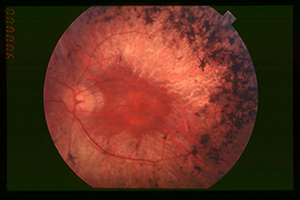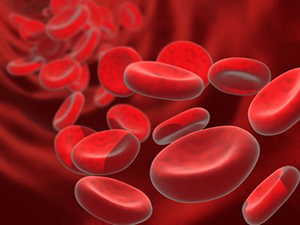 |
|
Linked pairs of cyanovirus were able to neutralize all 33 subtypes of HIV that they were tested against and further, the most successful was similar or more potent than seven well-studied anti-HIV antibodies known to be broadly neutralizing. (Credit: Jennifer Keeffe) |
"By linking two cyanovirins, we were able to make significantly more potent HIV-fighting molecules," says Jennifer Keeffe, a staff scientist at California Institute of Technology (Caltech) and first author of a new study. "One of our linked molecules was 18 times more effective at preventing infection than the naturally occurring, single protein."
The linked pairs, or dimers, were able to neutralize all 33 subtypes of HIV that they were tested against—the most successful was similar or more potent than seven well-studied anti-HIV antibodies known to be broadly neutralizing.
The protein, cyanovirin-N (CV-N), has gained attention for its ability to ward off several diseases caused by viruses, including HIV and influenza. The protein binds well to certain carbohydrates, such as the kind found in high quantities connected to the proteins on the envelope that surrounds the HIV virus.
Once attached, it prevents a virus from infecting cells, although the mechanism by which it accomplishes this is not well understood.
What is known is that each CV-N protein has two binding sites where it can bind to a carbohydrate and that both sites are needed to neutralize HIV.
The findings are published in the journal Proceedings of the National Academy of Sciences.
Once the researchers had linked two CV-Ns together, they wanted to know if the enhanced ability of their engineered dimers to ward off HIV was related to the availability of additional binding sites.
So they engineered another version of the dimers—this time with one or more of the binding sites knocked out—and tested their ability to neutralize HIV.
It turns out that the dimers’ infection-fighting potency increased with each additional binding site—three sites are better than two, and four are better than three. The advantages stops there—there were no additional improvements when they linked three or four CV-N molecules together to create molecules with six to eight binding sites.
Although CV-N has a naturally occurring dimeric form, it isn’t stable at physiological temperatures, and thus mainly exists in single-copy form. To create dimers that would be stable under such conditions, the researchers covalently bound together two CV-N molecules in a head-to-tail fashion, using flexible polypeptide linkers of varying lengths.
By stabilizing the dimers and locking them into a particular configuration, researchers created proteins with distances between binding sites that are very similar to those between the carbohydrate binding sites in a broadly neutralizing anti-HIV antibody.
"It is possible that we have created a dimer that has its carbohydrate binding sites optimally positioned to block infection," says Stephen Mayo, professor of biology and chemistry and corresponding author of the new paper.
"Our hope is that those who are working to make prophylactic treatments using cyanovirin will see our results and will use CVN2L0 instead of naturally occurring cyanovirin," Keeffe says. "It has higher potency and may be more protective."
The work was funded by the National Security Science and Engineering Faculty Fellowship program, the Defense Advanced Research Projects Agency Protein Design Processes program, and the Bill and Melinda Gates Foundation.

|










